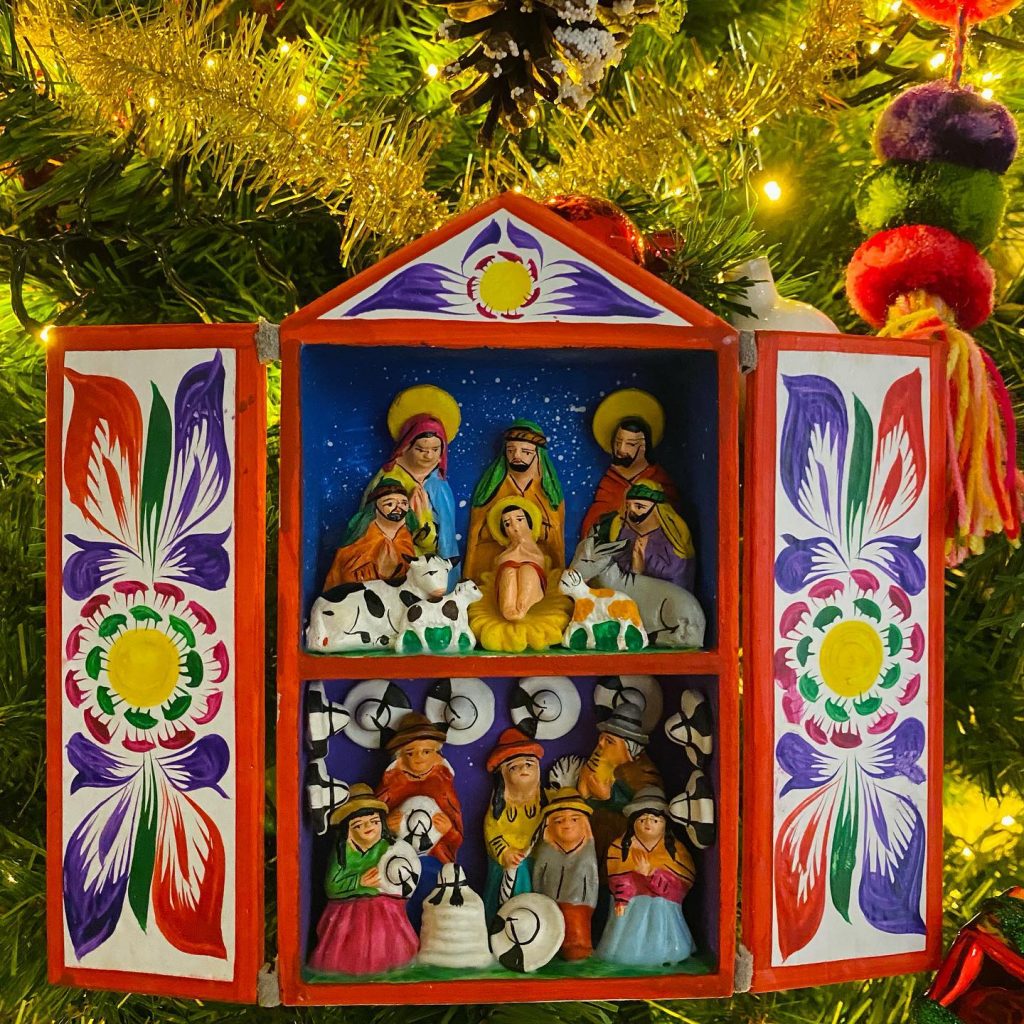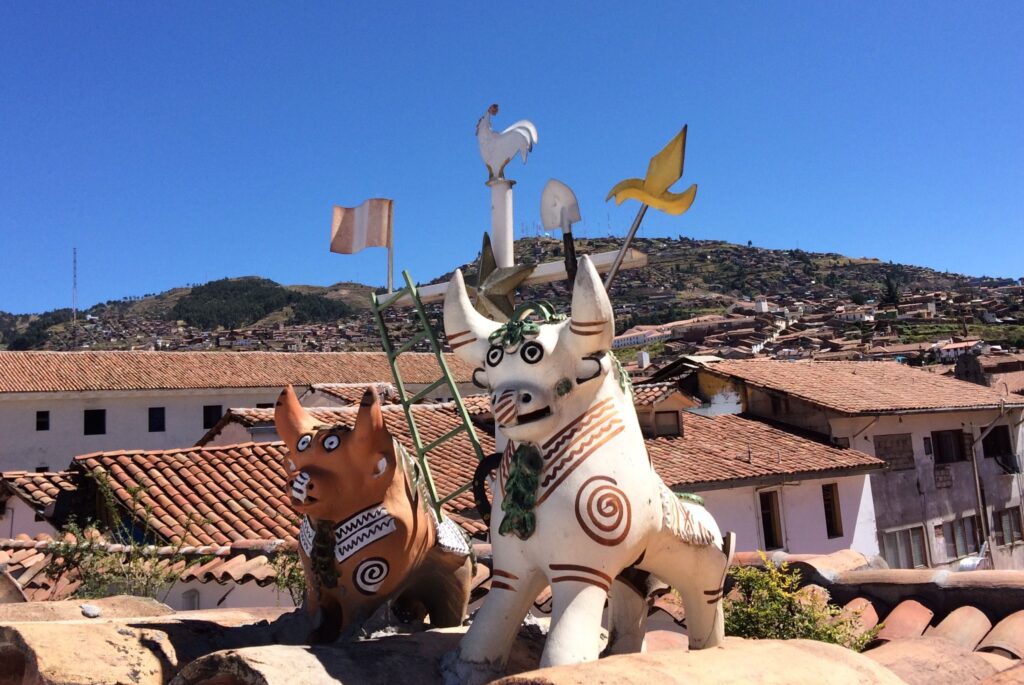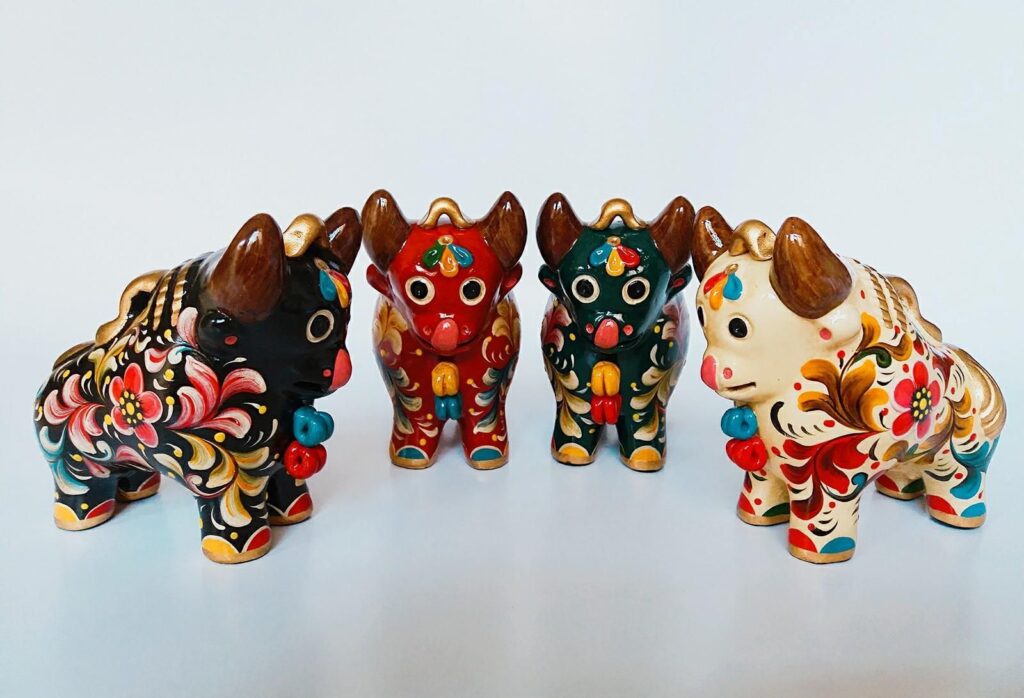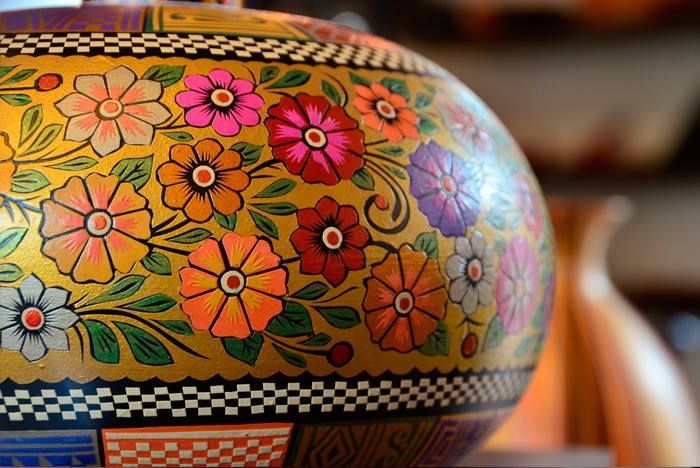Visitors to our country do not overlook Peruvian art, as they want to find the bright colors, high quality, and meaning fascinating, catching the eye immediately. From alpaca wool and hand-woven textile art to kitchen utensils, you’ll find an array of souvenirs to bring home from your Peruvian trip.
However, what can you choose, and why? Luckily for you, we made this post, so, keep reading as you’ll learn our tips and what travel memories you can get from souvenir shopping in our country. Let’s go!
Retablo Ayacuchano, an expression of faith
Retablos are a fine example of Peruvian art that blend colonial and local traditions, especially from Ayacucho. These beautiful creations began as portable altars for worship displaying small figures of saints and biblical stories. Over time, retablos evolved, they started to show everyday life, lively festivals, and key historical events.

Retablos are painted wooden boxes, with doors that open to reveal a three-dimensional scene inside. The scene is filled with hand-molded and hand-painted clay or dough figures. Each figure is meticulously crafted, resulting in a detailed and vibrant piece of art.
Retablos are a beautiful reflection of Peru’s rich cultural identity mixing religious traditions with both rural and urban life, creating unique art pieces. Today, people value retablos for their spiritual and cultural meaning. The Retablos can also be uses as decorations, like Christmas ornaments. Many collectors and tourists love to buy them as perfect souvenirs from Peru.
Pucara Bulls: more than just great souvenirs
In Cusco and Puno, some traditional Peruvian houses have tile roofs. You’ll see clay-made bulls on the roofs, sometimes next to tiny Peruvian flags or a cross. Those are “Toritos de Pucara” or Pucara bulls. These works of art have an interesting history, dating back to the Spanish invasion of Peru.

The bull was a vital asset for their festivities since they brought food, traditions, and creatures that the Incas were unfamiliar with. In festivals, they adorned them with brilliant colors and spice powder on their nostrils, which made them exceedingly active, this is why artisans depict bulls with tongues out.
Besides being placed on roofs, they are beautiful home decor thanks to their colorful and vibrant hues. These souvenirs have deep meaning, as they represent protection and prosperity when are placed in roofs.

The Pucara bulls themselves also represent fertility and the Andean duality: the fusion of bad and good energies. It’s in Pucara, a small village in Puno, near Lake Titicaca where you can learn about its pottery. It has a fascinating history and skilled artisans.
Mate Burilado, Pumpkin Carving
“Mate burilado” is a magnificent type of folk art that shows the beauty of carved designs on dried gourds known as “mates.” This fascinating technique dates back to pre-Columbian times, it’s especially prevalent in Andean areas, particularly Huancayo and Ayacucho.

The word “burilado” is derived from the utensil known as a “buril.” The unusual form this piece of work has is thanks to the calabash or gourd fruit, decorated using the buril. Artists use the buril, the fine, pointed instrument to etch designs on the surface of gourds.
These gifted artists create intricate designs that honor daily life, festivals, stunning landscapes, rich stories and legends. According to researchers, burilados from around 4,000 years ago have been found in Peru. Local artisans have kept this tradition alive through oral traditions and ancient documents.
Cusco School
When you visit Cusco, you’ll be amazed by the beautiful artwork in its churches, monasteries, convents, old mansions, and museums. The stunning sculptures and paintings tell religious stories and showcase a special Andean style. This unique version of Baroque art is influenced by Flemish designs, making it truly one of a kind. We assure you you’ll love exploring these artistic treasures!

“The Cusqueña School of Art” blossomed during the colonial period thanks to a group of Peruvian artists with indigenous backgrounds. They drew inspiration from talented European artists, like Bernardo Bitti, a Jesuit priest who learned from Michelangelo. When the Spaniards arrived in Peru, they brought new ideas that transformed indigenous art in exciting ways.

Early in the colonial period, Spanish missionaries struggled to teach their religion to the indigenous people in their language, so, they used pictures to evangelize. While Lima housed the first painting school, Cusco soon became a major artistic center. The Cusqueña School became famous for its blend of European and indigenous elements, making this mix a key part of Peru’s cultural identity.
By the 17th and 18th centuries, the Cusqueña School was a major art tradition. It combined Western techniques with indigenous views. Notable works from this period include “The Tears of St. Peter” and “The Coronation of the Virgin.” Currently, you can see all these pictures in Peru’s National Museum of Archaeology, Anthropology, and History.

Diego Quispe Tito, born in Cusco in 1611, is the most prominent artist of the Cusqueña School. His works stand out because of their creative perspective and beautiful landscapes. Another important artist is Basilio de Santa Cruz Pumacallo, famous for his lively compositions. Today, we invite visitors to Cusco to see these amazing artworks in local churches, we also recommend drop-by workshops in San Blas Neighborhood. We can bet you’ll find lovely art depictions to take home.
Honorable Mentions and Places to Get Souvenirs
Cusco is perhaps the best place for local art. Considered the ancient capital of the Incas, is Peru’s major tourist hub. You can get more ideas by clicking this link.

Ayacucho, a small Peruvian city, is “Peru’s Folk Art and Handicrafts Capital.” Its craftsmanship is rich and of high quality. Ayacucho’s artists blend pre-Columbian skills and traditions with Spanish influences and ongoing innovation.

Among Cajamarca artisans’ wonderful creations, the famous Celendín straw hats truly capture the hearts of tourists. The artisans use toquilla straw and traditional hand-weaving methods.

This makes their work one-of-a-kind. In the “City of Hats,” women lovingly weave these stunning pieces, proudly carrying on a family tradition that has been cherished for generations.
As we said before, Pukara in Puno is a major hub for souvenirs and arts in southern Peru, it’s also a fantastic place to visit! Furthermore, Taquile Island in Lake Titicaca is a short distance away and offers a unique view of Puno’s art.

The talented ladies weave gorgeous pieces on traditional looms, while the men skillfully produce comfortable sweaters and chullos using local resources like as sheep fiber and alpaca.
In Peru, you can find from intrincate-made art pieces to simple tote bags. We hope you can get some travel souvenirs when you visit us because they mean you’re taking home a piece of Peru.
Contact Viagens Machu Picchu’s experts to learn more about our culture, traditions, and amazing places! We’ll be more than glad to help you set up your long-awaited Peru trip, we’re waiting for you!
Viagens Machu Picchu, journeys that inspire, moments that last.
| Spanish > Viagens Machu Picchu |
| English >Viagens Machu Picchu |
| Portuguese > Viagens Machu Picchu |

